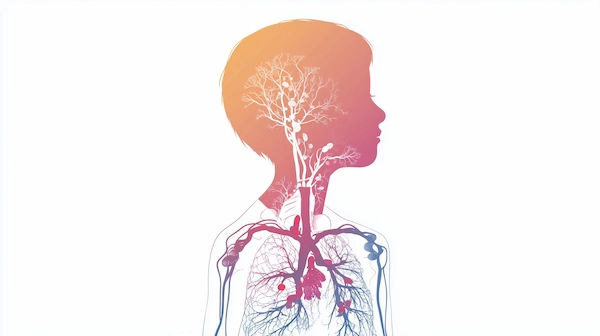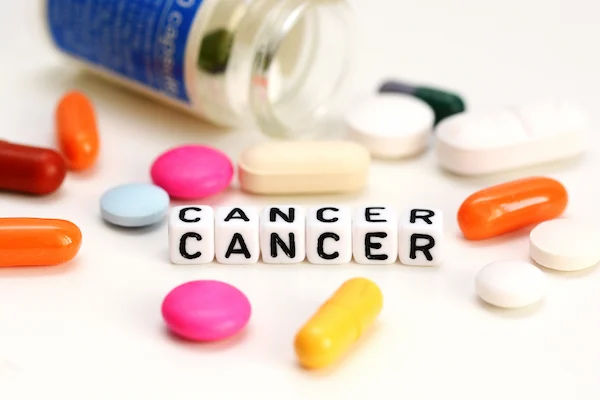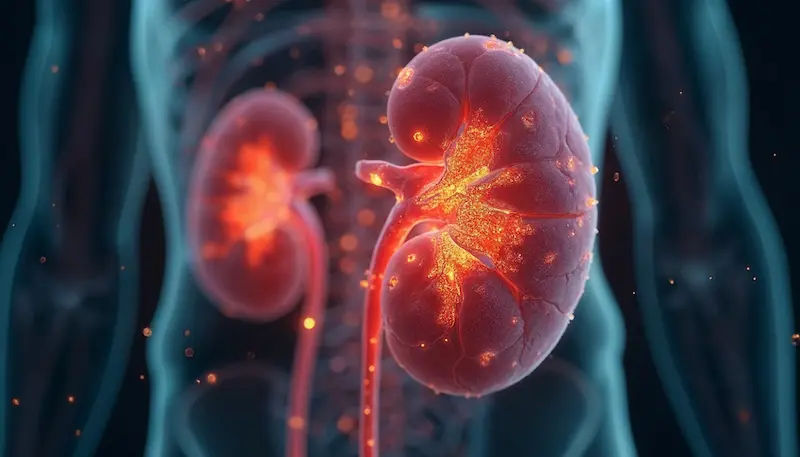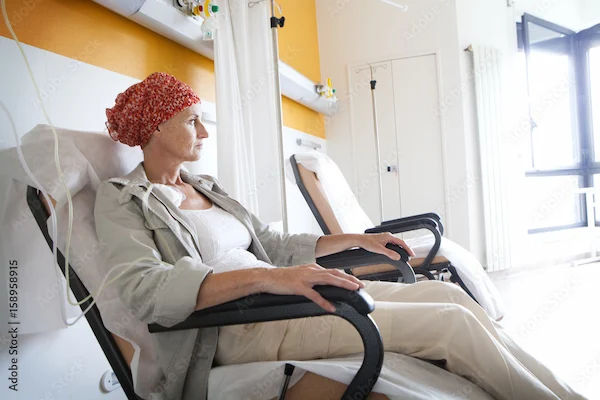What is Paediatric Oncology
Learn what paediatric oncology is, how childhood cancers differ from adult cancers, and the latest treatments including chemotherapy, surgery, radiation, and immunotherapy. Understand symptoms, diagnosis, recovery, and long-term care for children with cancer.

Written by Dr. Mohammed Kamran
Reviewed by Dr. D Bhanu Prakash MBBS, AFIH, Advanced certificate in critical care medicine, Fellowship in critical care medicine
Last updated on 22nd Oct, 2025
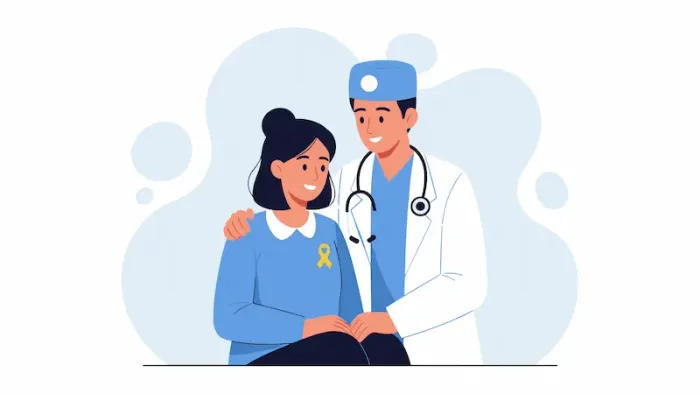
Introduction
Hearing the words “your child has cancer” is every parent’s worst fear. Yet advances in paediatric oncology mean that more children than ever are not only surviving but thriving after treatment. This practical, compassionate guide distills trusted information on category/paediatric oncology into one place—so you can understand what paediatric cancer is, how it’s diagnosed and treated, and how families can cope at every step. We’ll explain common childhood cancers, early signs and symptoms, tests and staging (or risk grouping), treatment options such as chemotherapy, surgery, radiation, immunotherapy, and clinical trials, and what life looks like during and after therapy. We’ll also cover side-effect management, school and emotional support, survivorship and late effects, costs and access, and how to choose a paediatric oncology center. Where relevant, we’ll reference authoritative sources and include simple checklists and visuals. If symptoms persist or you’re concerned about your child, don’t wait—speak to a doctor. If you need quick guidance, you can consult a doctor online with Apollo 24|7 for further evaluation and support. Let’s walk through paediatric oncology together—one clear step at a time.
H2: What Is Paediatric Oncology?
H3: How it differs from adult oncology
H3: The role of a paediatric oncologist
Paediatric oncology is the branch of medicine that diagnoses and treats cancers in children and adolescents, from infancy through the teenage years. While “oncology” often brings to mind adult cancers, children’s cancers are biologically distinct. They tend to arise from developing tissues—like blood-forming cells (leukaemias), the nervous system (brain tumours, neuroblastoma), muscle or bone (sarcomas)—and are less linked to lifestyle factors. Because children are growing, paediatric oncologists tailor therapy to maximize cure while minimizing long-term effects on growth, learning, fertility, and organ function [1][2].
How it differs from adult oncology:
- Biology and types. Childhood cancers include acute lymphoblastic leukaemia (ALL), brain and central nervous system tumours, lymphomas, neuroblastoma, Wilms tumour (kidney), and sarcomas. Adults more commonly face carcinomas (lung, breast, colon) [2][3].
- Staging vs risk grouping. Many paediatric cancers are classified by risk groups (standard, intermediate, high) based on biology and response, not just tumor size/spread. This helps tailor intensity [2].
- Higher cure rates. In high-income settings, more than 80% of children with cancer can be cured; globally, cure rates vary with access to care [1].
- Developmental needs. Treatment plans include education support, play therapy, and family-centered care to address emotional and developmental needs.
Consult a Top Gynaecologist
The role of a paediatric oncologist:
Paediatric oncologists lead a multidisciplinary team that may include paediatric surgeons, radiation oncologists, nurses, pharmacists, child-life specialists, social workers, psychologists, physiotherapists, and nutritionists. They coordinate diagnosis, therapy, supportive care, and long-term follow-up. Many children are treated on protocol-driven regimens through networks such as the Children’s Oncology Group (COG), which ensures state-of-the-art, evidence-based care and access to clinical trials when appropriate [5]. Unique insight: In paediatrics, the care plan often also includes individualized school reintegration goals and age-appropriate communication strategies—critical to kids’ resilience.
H2: How Common Is Childhood Cancer?
H3: Incidence and trends worldwide
H3: Most common cancers by age group
Childhood cancer is relatively rare. Globally, an estimated 400,000 children and adolescents (0–19 years) are diagnosed each year [1]. In high-income countries, childhood cancers account for less than 1% of all cancers, but they remain a leading cause of disease-related death in children. Importantly, survival gaps are stark: Cure rates exceed 80% in many high-income settings but can be 20–30% in low- and middle-income countries due to delays in diagnosis and limited access to comprehensive care [1]. This “survival gap” is a major global health focus.
Incidence and trends: Leukemias are the most common childhood cancers, followed by brain and central nervous system tumors and lymphomas [2][3]. Over recent decades, survival has improved dramatically thanks to risk-adapted therapy and supportive care. For example, survival for acute lymphoblastic leukemia (ALL)—the most common paediatric cancer—now approaches 90% in high-resource settings [2]. However, certain brain tumors and high-risk neuroblastoma still pose challenges. Public awareness, early recognition, and timely referral to paediatric oncology centers help improve outcomes—a point parents and primary care providers should note.
Most common cancers by age:
- Infants and toddlers: Neuroblastoma, retinoblastoma, Wilms tumor.
- School-age children: ALL, brain tumors, lymphomas.
- Adolescents: Hodgkin lymphoma, osteosarcoma, Ewing sarcoma, thyroid cancer, germ cell tumors [2][3].
Because biology and responses differ, paediatric oncology teams use age- and risk-tailored regimens. Long-tail keyword naturally included: types of childhood cancer explained; childhood leukaemia vs lymphoma differences.
H2: Signs and Symptoms: When to Seek Help
H3: Red flags parents should not ignore
H4: When to consult Apollo 24|7
Early signs of paediatric cancer can be subtle and mimic common illnesses. Trust your instincts and see a doctor if symptoms are persistent, unusual for your child, or progressively worsening. General red flags include:
- Unexplained, persistent fever or fatigue
- Easy bruising or bleeding; frequent infections
- Unexplained weight loss, loss of appetite
- Night sweats, persistent bone or joint pain
- Headaches with early morning vomiting; balance or vision changes
- Painless lumps/swelling in the neck, chest, abdomen, or limbs
- A white glow in the pupil or crossed eyes (possible retinoblastoma)
- Abdominal swelling, persistent constipation without cause [3][4]
No single symptom equals cancer—but patterns matter. For example, leukemia may present with pallor, bruising, fevers, and bone pain; brain tumors can cause morning headaches, vomiting, and coordination changes; lymphomas may present with painless lymph node enlargement and night sweats. If symptoms persist beyond two weeks, consult a doctor online with Apollo 24|7 for further evaluation. If worrisome signs are present (e.g., a new hard lump, repeated morning vomiting, unusual bruising), seek prompt in-person assessment.
Unique insight: Parents are often the first to notice subtle trends—like a child avoiding favorite activities due to pain or fatigue. Keeping a simple symptom diary (date, time, severity, triggers) can help your paediatrician spot patterns and expedite referral. Long-tail keyword included: childhood cancer symptoms parents should know.
H2: Diagnosis: Tests and Staging Explained
H3: Imaging, blood tests, biopsies
H3: Risk stratification rather than staging in kids
H4: Lab tests and home collection
The diagnostic process begins with a thorough history and physical. Next steps depend on suspected cancer type but commonly include:
- Blood tests: Full blood count (CBC), chemistry panel, liver/kidney function, LDH, uric acid; sometimes tumor markers (e.g., AFP, beta-hCG for germ cell tumors). Apollo 24|7 offers convenient home collection for common lab tests when appropriate, though suspected cancer usually warrants hospital-based evaluation and urgent processing.
- Imaging: Ultrasound for abdominal masses; X-ray for bone lesions; MRI or CT for suspected brain or solid tumors; PET-CT in certain lymphomas [4].
- Biopsy: Core needle or surgical biopsy to confirm the diagnosis and define tumor biology (histology, molecular markers). For leukemias, bone marrow aspiration/biopsy and flow cytometry are standard [2][4].
- Lumbar puncture: To assess central nervous system involvement in leukemias/lymphomas.
- Genetic and molecular tests: Identify alterations that guide risk and targeted therapy (e.g., N-MYC in neuroblastoma, BCR-ABL in ALL) [2].
Risk stratification vs staging: While adult cancers often use TNM staging, many paediatric cancers rely on risk groupings—standard, intermediate, or high risk—based on tumor type, size, spread, response to initial therapy, and molecular features. For example, neuroblastoma risk incorporates age at diagnosis, stage (e.g., INRG stage), histology, and gene amplifications (like MYCN) [2]. This approach tailors therapy intensity to improve cure rates while limiting side effects. Long-tail keywords used: paediatric cancer diagnosis tests; risk stratification childhood cancer.
Case example: In Hodgkin lymphoma, staging via PET-CT and clinical features drives therapy duration and radiation decisions. Interim PET response after 2 cycles can de-escalate treatment in good responders, reducing long-term toxicity without compromising cure [2][5].
If your child needs multiple tests, ask the care team to coordinate them on the same day when possible to reduce stress and travel.
H2: Treatment Options in Paediatric Oncology
H3: Chemotherapy and targeted therapy
H3: Radiation therapy in children
H3: Surgery, stem cell transplant, and clinical trials
Treatment is individualized, multi-modal, and protocol-driven. Your child’s team will explain the plan clearly and adjust it based on response.
Chemotherapy and targeted therapy: Chemotherapy remains a cornerstone for many cancers (ALL, lymphomas, sarcomas, neuroblastoma). Regimens combine agents with different mechanisms to maximize cancer cell kill and prevent resistance. Targeted therapies (tyrosine kinase inhibitors, ALK inhibitors, BRAF/MEK inhibitors) are used when actionable mutations are present. For example, imatinib improves outcomes in Philadelphia chromosome–positive ALL; ALK inhibitors benefit subsets of neuroblastoma [2]. Case in point: Incorporating blinatumomab (a bispecific T-cell engager) into frontline therapy for certain ALL groups has improved minimal residual disease clearance in trials [2][5].
Radiation therapy: Used judiciously in paediatrics to minimize long-term effects on growth and cognition. Techniques like intensity-modulated radiation therapy (IMRT) and proton therapy can spare surrounding tissues. Common indications include brain tumors, Hodgkin lymphoma, and osteosarcoma metastases. Teams weigh benefits against risks (e.g., endocrine effects, second malignancy risk) [2][3].
Surgery and transplant: Paediatric surgeons aim for tumor removal while preserving function (e.g., limb-sparing surgery in osteosarcoma). For high-risk leukemias, lymphomas, or certain solid tumors, hematopoietic stem cell transplant (HSCT) may be recommended. Autologous transplant (patient’s own cells) is common in high-risk neuroblastoma; allogeneic transplant (donor cells) may be used in relapsed leukemias [2].
Clinical trials: Many children receive therapy within cooperative group trials (e.g., Children’s Oncology Group), which track outcomes and refine regimens. Participation can provide access to cutting-edge therapies and meticulous monitoring [5]. Ask your team which trials might be relevant. Long-tail keywords: paediatric oncology clinical trials; paediatric oncology treatment options.
Unique insight: Families can request a “treatment roadmap”—a one-page summary of the phases, expected durations, key milestones, and when to call for help. This improves clarity and reduces anxiety.
H2: Side Effects and Supportive Care
H3: Managing nausea, infections, and pain
H3: Nutrition, school, and mental health support
H4: Integrative and rehabilitative care
Modern supportive care is a major reason survival has improved. Proactive management keeps kids safer and more comfortable.
Common side effects and management:
- Nausea/vomiting: Antiemetics like ondansetron, aprepitant, and dexamethasone are tailored to the chemo regimen. Hydration and small frequent meals help [2][4].
- Infections and neutropenia: Fever during chemotherapy is an emergency. Families receive a fever plan (e.g., go to hospital if temperature ≥38.0°C). Preventive antibiotics or growth factors may be used. Ensure household vaccinations are up to date—some live vaccines are deferred during chemotherapy. Always coordinate with the oncology team and primary care. CDC and expert guidance emphasize vaccine timing for immunocompromised children [6].
- Pain and mucositis: Mouth care protocols, topical anesthetics, and pain plans reduce suffering.
- Anaemia and bleeding: Transfusions and growth factors as indicated.
Nutrition, school, and mental health:
Dietitians tailor energy-dense, child-friendly plans. Teachers and hospital school programs keep education on track; Individualized Education Plans (IEPs) or accommodations can support learning. Psychologists and child-life specialists help children process emotions through play, art, and age-appropriate counseling. Siblings also need support. Long-tail keywords: chemotherapy side effects in children; school support during cancer treatment.
Integrative and rehabilitative care:
Physical therapy maintains strength and mobility; occupational therapy supports activities of daily living. Evidence-based integrative options—like guided imagery for anxiety or acupuncture for chemotherapy-induced nausea—can be considered with the team’s guidance. Unique insight: A “comfort cart” at home (thermometer, oral care kit, hydration bottles, distraction toys, a printed fever plan) reduces panic during night-time symptoms.
If your child experiences persistent side effects or new symptoms, book a physical visit to a doctor with Apollo 24|7 to adjust supportive care promptly.
H2: Life During and After Treatment
H3: Vaccinations and infection prevention
H3: Survivorship and late effects follow-up
H4: Fertility preservation and growth
Life during treatment revolves around cycles of therapy, clinic visits, and recovery—and also birthdays, school projects, and favorite shows. Building routines around the child’s energy level helps retain normalcy.
Vaccinations and infection prevention:
- During chemotherapy, inactivated vaccines may be given on a case-by-case basis; live vaccines are typically deferred. After therapy, most children need revaccination schedules because immunity can wane. Follow your oncology and primary care team’s guidance, which often aligns with CDC/ACIP recommendations for immunocompromised children [6].
Survivorship and late effects:
Thanks to improved cures, there are more survivors than ever. Survivorship clinics track potential late effects: heart or lung issues, endocrine problems (growth hormone deficiency, thyroid issues), cognitive changes, secondary malignancies, hearing loss, and fertility concerns [2][7]. Each child should receive a written survivorship care plan summarizing treatments received and recommended follow-up tests—this helps both families and future clinicians. Long-tail keywords: survivorship care for childhood cancer; late effects of childhood cancer treatment.
Fertility and growth:
Certain treatments affect fertility or growth plates. Early discussion is essential: sperm banking for post-pubertal boys; oocyte/ovarian tissue preservation for girls and young women; testicular tissue preservation in prepubertal boys (in research settings). Endocrinology follow-up supports growth and pubertal development [2][7]. Unique insight: Consider creating a “medical memory file”—photos of the child during treatment, their care team, and milestones—to help kids process their journey later and build pride in their resilience.
H2: Research Frontiers and Hope
H3: Immunotherapy and CAR T-cell therapy
H3: Genomics and precision medicine
Paediatric oncology is advancing rapidly, with breakthroughs moving from labs to clinics.
Immunotherapy:
- CAR T-cell therapy involves engineering a child’s own T cells to target cancer. CAR T directed at CD19 has transformed care for relapsed/refractory B-ALL, achieving high remission rates in heavily pretreated children [2][10]. Side effects (cytokine release syndrome, neurotoxicity) require expert management, but protocols and outcomes continue to improve.
- Antibody-drug conjugates (e.g., inotuzumab for ALL) and immune checkpoint modulators are under active study, with promising signals in select paediatric cancers.
Genomics and precision medicine:
Comprehensive genomic profiling can uncover actionable mutations and refine risk. In neuroblastoma, MYCN amplification and segmental chromosomal aberrations guide therapy intensity. In sarcomas, specific translocations (e.g., EWSR1-FLI1 in Ewing sarcoma) inform diagnosis and trials [2]. As more targeted agents are developed for children, collaboration through networks like COG accelerates access [5]. Long-tail keyword included: CAR T-cell therapy in paediatric oncology; genomics and precision medicine in childhood cancer.
Unique insight: Ask whether your child’s tumor tissue will be stored for future research. Many centers participate in biobanking, enabling discoveries that can benefit your child’s follow-up and others in the future.
H2: Choosing a Paediatric Oncology Center, Costs, and Access
H3: What to look for in a center
H3: Insurance, financial aid, and telehealth
What to look for:
- Multidisciplinary paediatric-specific team (oncology, surgery, radiation, child-life, psychology, nutrition)
- Access to clinical trials and standardized protocols (e.g., COG)
- Paediatric intensive care and supportive services
- Survivorship program and rehabilitation
- Family-friendly environment (play areas, schooling support), and infection control excellence [5].
Costs and access:
Cancer care can be expensive. Speak early with hospital social workers about insurance coverage, government schemes, and NGO support available in your region. Organizations like POGO and CureSearch provide family resources and financial guidance [9]. Telehealth can help with routine follow-ups, medication checks, and second opinions—services that platforms like Apollo 24|7 can support alongside in-person care when needed. Long-tail keywords: how to choose a paediatric oncology center; telehealth for childhood cancer follow-up.
Unique insight: Create a “care notebook” with tabs—contacts, appointments, lab results, medications, school letters, insurance papers. Bring it to every visit; it saves time and reduces errors.
H2: Glossary of Common Paediatric Oncology Terms
- ALL/AML: Acute lymphoblastic/myeloid leukaemia
- Risk stratification: Grouping patients by features that predict outcomes (e.g., standard/high risk)
- MRD: Minimal residual disease—tiny amounts of cancer detectable by specialized tests
- Port/central line: A device placed under the skin or in a vein for easy medication delivery
- Neutropenia: Low neutrophil count; increases infection risk
- HSCT: Hematopoietic stem cell transplant
- Proton therapy: Radiation that spares surrounding tissues more precisely than conventional X-rays
Consult a Top Gynaecologist
Conclusion
Paediatric oncology is a field built on science, teamwork, and hope. While childhood cancers are rare, they demand rapid recognition, specialized care, and family-centered support. You’ve learned how paediatric cancers differ from adult cancers; the symptoms that warrant evaluation; how diagnosis and risk stratification guide therapy; and the range of treatments—from chemotherapy to surgery, radiation, targeted drugs, and immunotherapy—used to cure children today. Equally vital is supportive care: preventing infections, controlling symptoms, nurturing mental health, and supporting school and social life. Survivorship planning ensures children not only survive but thrive, with attention to growth, learning, and long-term health. Choosing a dedicated paediatric oncology center and exploring clinical trials can further improve outcomes. If your child has persistent symptoms or you need guidance, consult a doctor online with Apollo 24|7 for timely advice; if tests are required, Apollo 24|7 can arrange home collections for many labs when appropriate. With the right information and the right team, families can navigate this journey with clarity and confidence. Keep asking questions, keep notes, and remember: you are not alone.
Consult a Top Gynaecologist

Dr. Swati Shah
Surgical Oncologist
15 Years • DNB Surgical Oncology, certified Robotic Cancer Surgeon
Ahmedabad
Apollo Hospitals Gandhinagar, Ahmedabad
(25+ Patients)

Dr. Karuna Ratwani
Obstetrician and Gynaecologist
11 Years • MBBS, MS( Obstetrics & Gynaecology), F.MAS, FICRS Advanced Diploma in Minimal Access surgery Fellow of International College of Robotic Surgeons Diploma in Reproductive Medicine, Kiel-Germany Masters in Cosmetic Gynaecology , Greifswald-Germany Masterclass in Obstetrics & Gynaecology Ultrasound ( ISUOG, UK)
Delhi
Apollo Hospitals Indraprastha, Delhi
(25+ Patients)

Dr. S. Gowrimeena
Obstetrician and Gynaecologist
12 Years • MBBS, MD, DNB, CIMP, MRCOG
Chennai
Apollo Speciality Hospitals Vanagaram, Chennai
(25+ Patients)
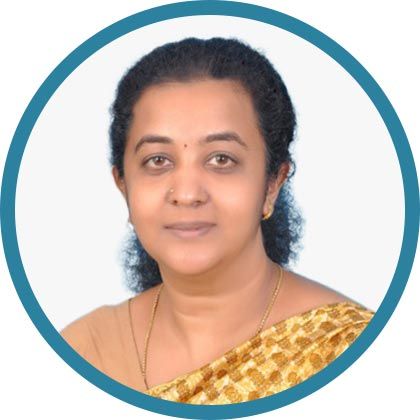
Dr Parimalam Ramanathan
Obstetrician and Gynaecologist
25 Years • M.D(O.G.),DNB,MRCOG(UK),CCT(UK),FMAS,FRCOG(UK)
Chennai
Apollo Speciality Hospitals OMR, Chennai
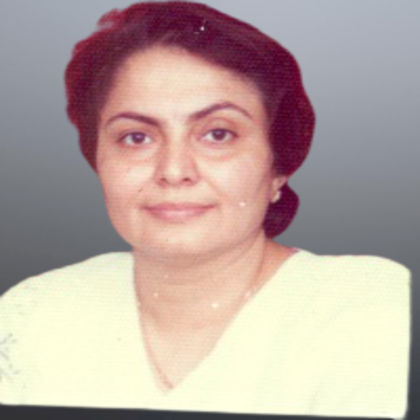
Dr. Madhu Roy
Obstetrician and Gynaecologist
30 Years • MBBS, MD
Delhi
Apollo Hospitals Indraprastha, Delhi
(25+ Patients)
Consult a Top Gynaecologist

Dr. Swati Shah
Surgical Oncologist
15 Years • DNB Surgical Oncology, certified Robotic Cancer Surgeon
Ahmedabad
Apollo Hospitals Gandhinagar, Ahmedabad
(25+ Patients)

Dr. Karuna Ratwani
Obstetrician and Gynaecologist
11 Years • MBBS, MS( Obstetrics & Gynaecology), F.MAS, FICRS Advanced Diploma in Minimal Access surgery Fellow of International College of Robotic Surgeons Diploma in Reproductive Medicine, Kiel-Germany Masters in Cosmetic Gynaecology , Greifswald-Germany Masterclass in Obstetrics & Gynaecology Ultrasound ( ISUOG, UK)
Delhi
Apollo Hospitals Indraprastha, Delhi
(25+ Patients)

Dr. S. Gowrimeena
Obstetrician and Gynaecologist
12 Years • MBBS, MD, DNB, CIMP, MRCOG
Chennai
Apollo Speciality Hospitals Vanagaram, Chennai
(25+ Patients)

Dr Parimalam Ramanathan
Obstetrician and Gynaecologist
25 Years • M.D(O.G.),DNB,MRCOG(UK),CCT(UK),FMAS,FRCOG(UK)
Chennai
Apollo Speciality Hospitals OMR, Chennai

Dr. Madhu Roy
Obstetrician and Gynaecologist
30 Years • MBBS, MD
Delhi
Apollo Hospitals Indraprastha, Delhi
(25+ Patients)
More articles from Cancer
Frequently Asked Questions
Q1: What are the most common childhood cancers?
Leukemias (especially ALL), brain and central nervous system tumors, and lymphomas are most common in paediatric oncology; others include neuroblastoma, Wilms tumor, and sarcomas [2][3].
Q2: How are childhood cancers different from adult cancers?
They arise from developing tissues, have distinct genetics, and are managed with risk-adapted protocols rather than solely by stage. Cure rates are often higher with standardized paediatric regimens [2].
Q3: What side effects should we watch for during chemotherapy?
Fever (emergency), nausea, vomiting, mouth sores, fatigue, infections, and anemia are common. You’ll receive a fever plan and supportive medications. If symptoms are severe or persistent, consult your care team or a doctor online with Apollo 24|7 [2][4].
Q4: Will my child be able to go to school during treatment?
Many children continue some schooling with adaptations. Hospital teachers, home tutoring, and individualized education plans help maintain progress. Infection precautions may be needed [7].
Q5: What is CAR T-cell therapy, and who might benefit?
CAR T-cell therapy reprograms a child’s T cells to target cancer (e.g., CD19 in B-ALL). It’s used for certain relapsed/refractory leukemias, with high remission rates at specialized centers.

